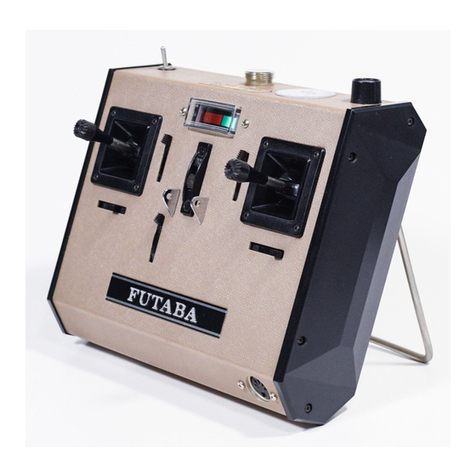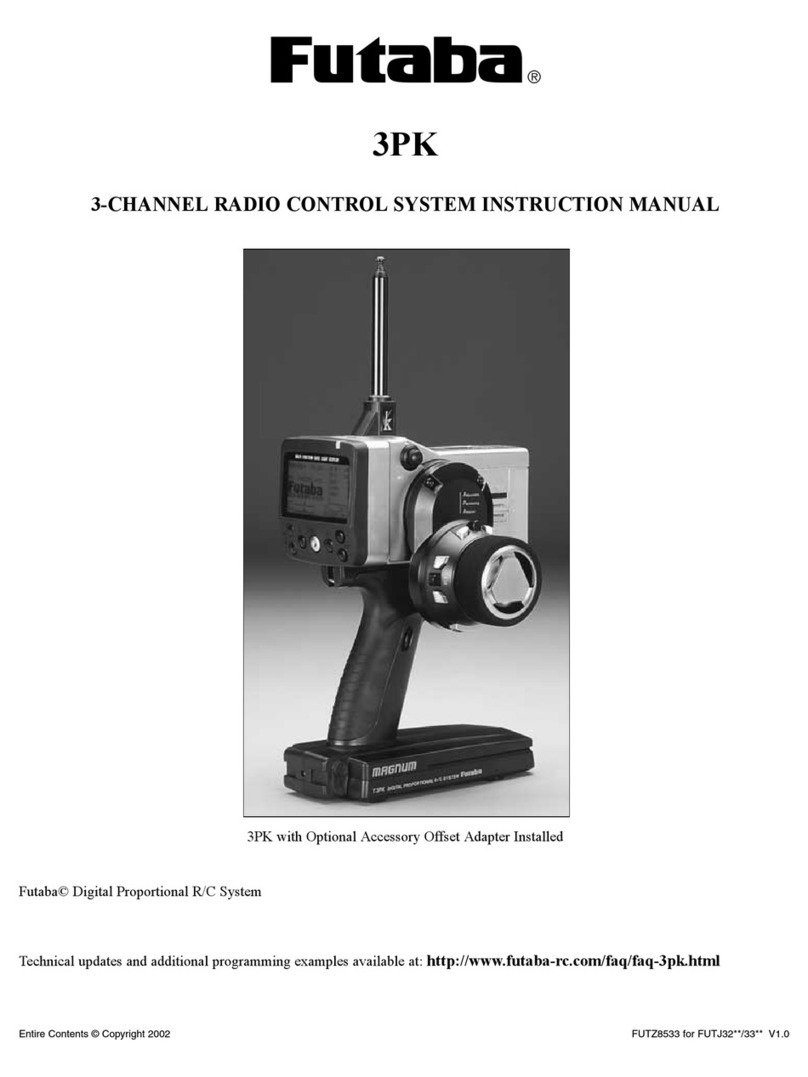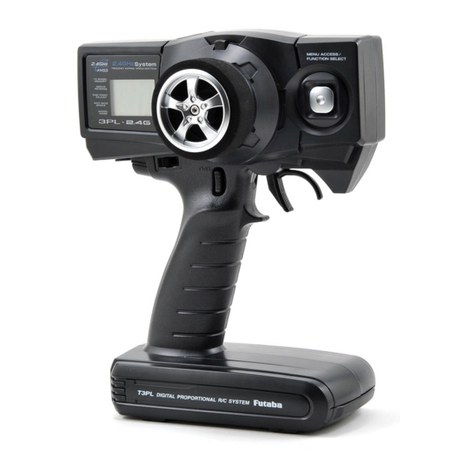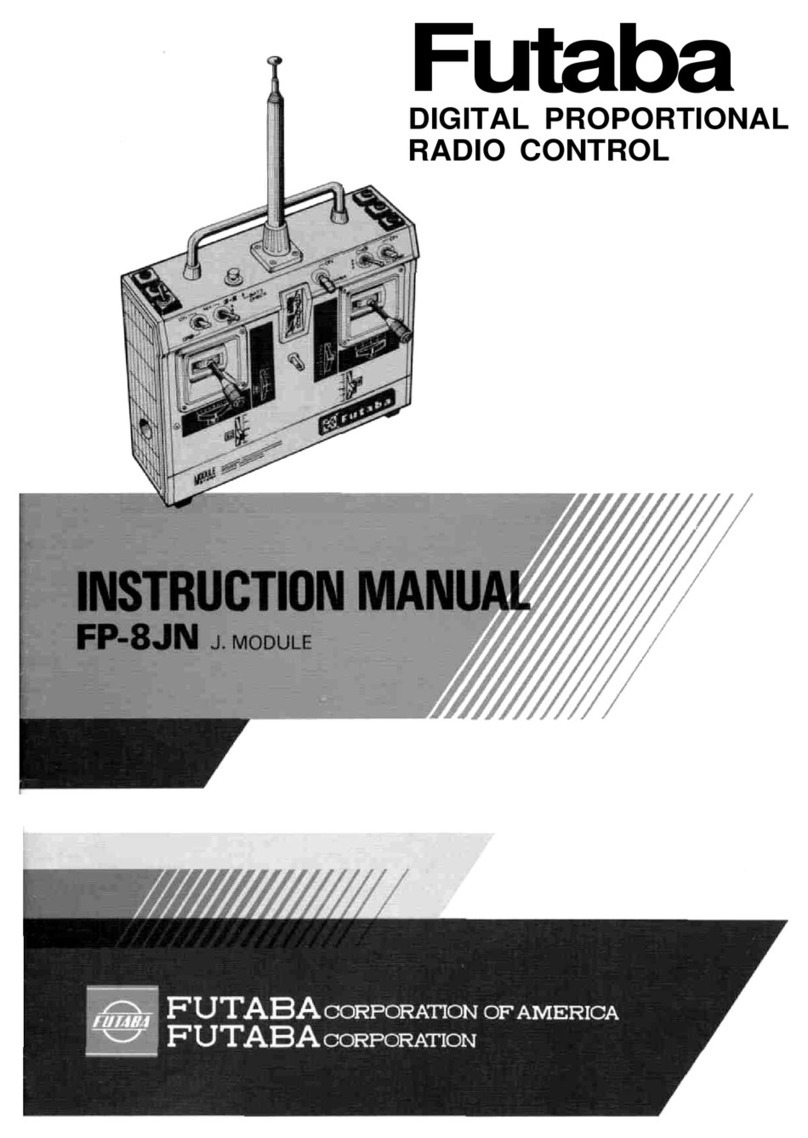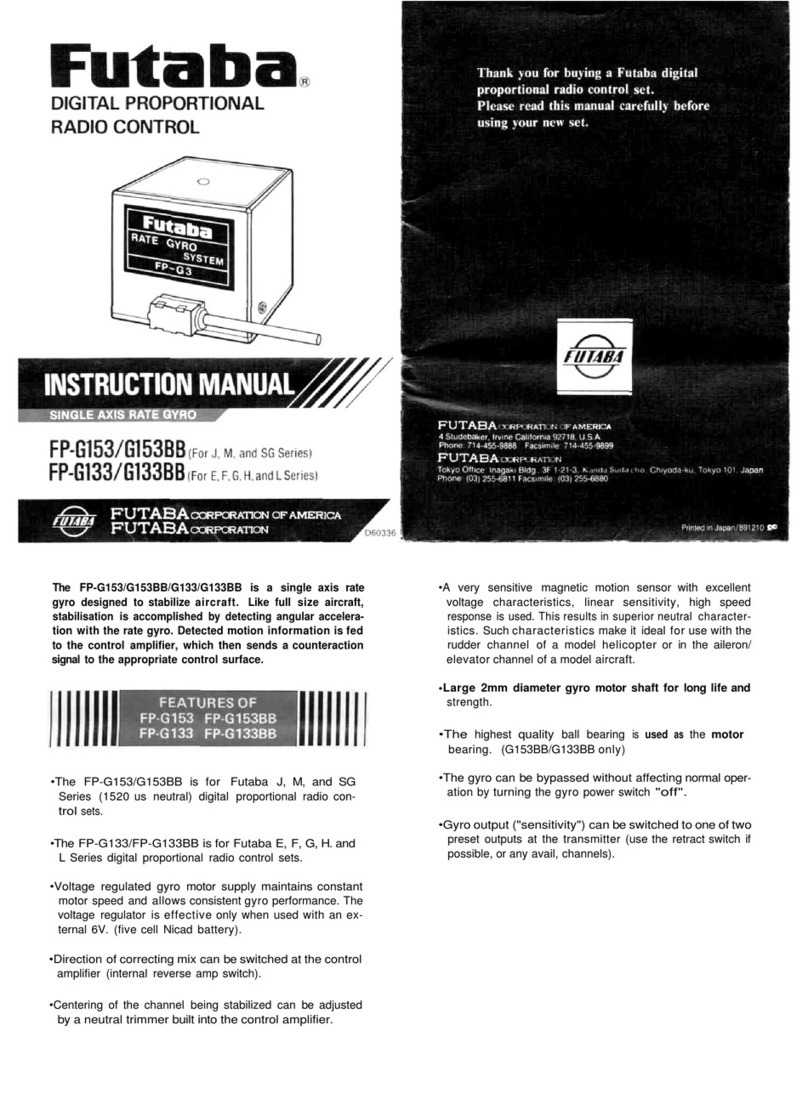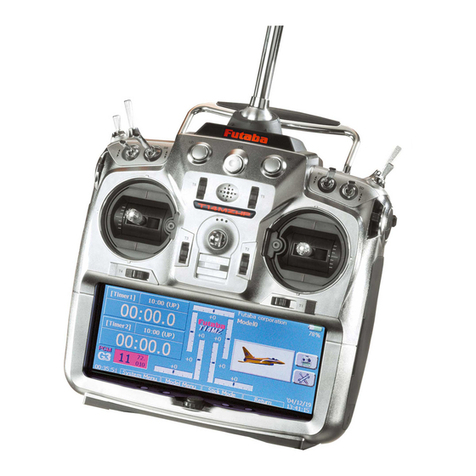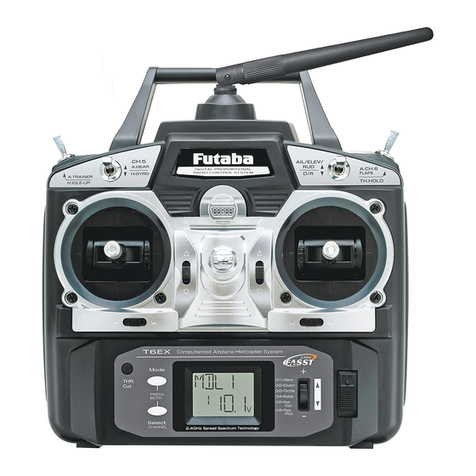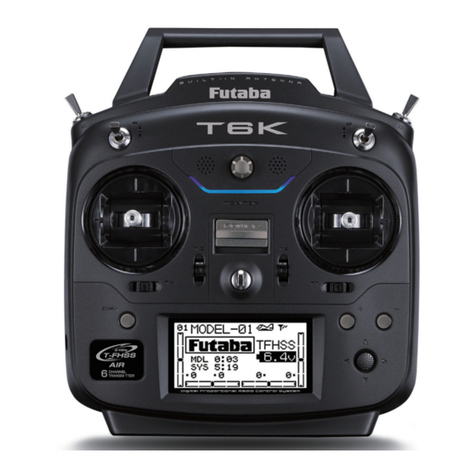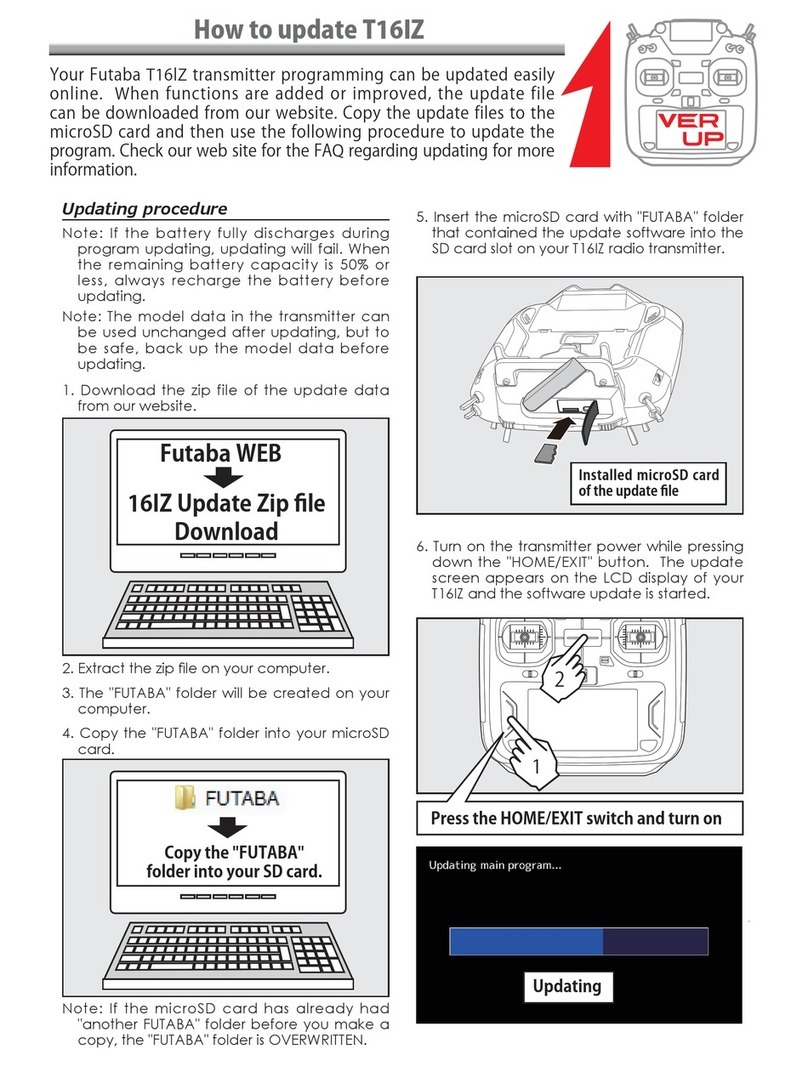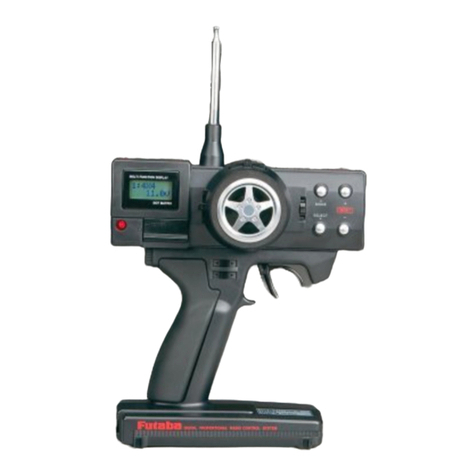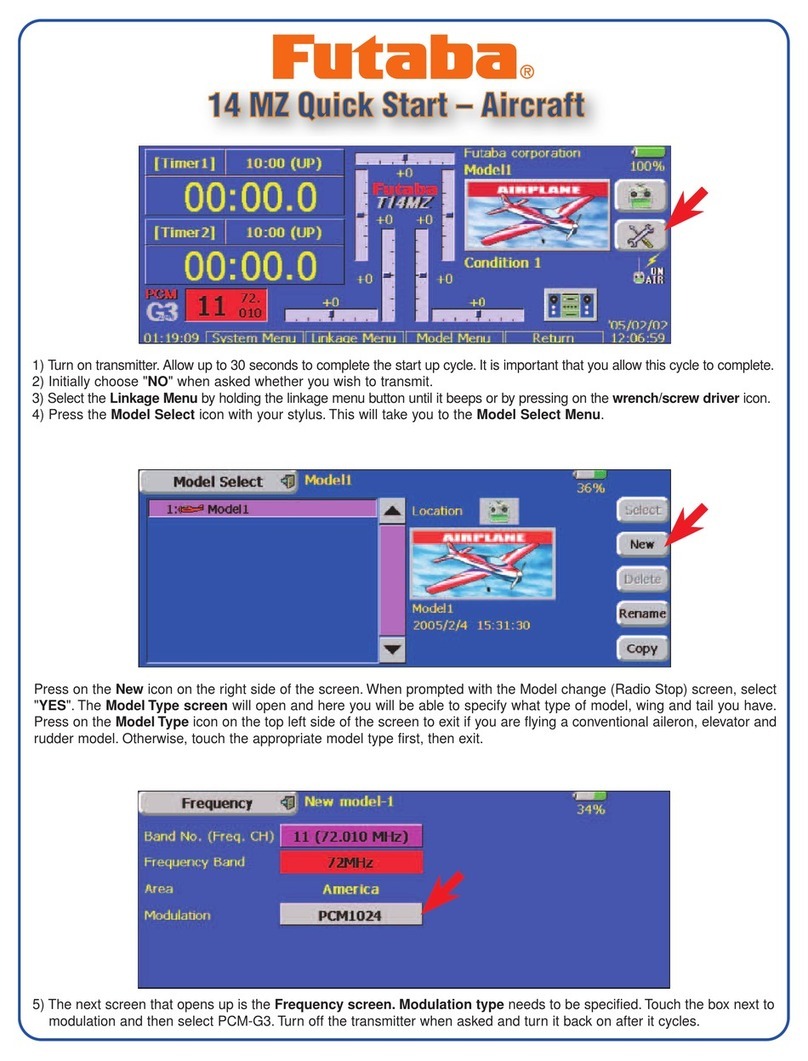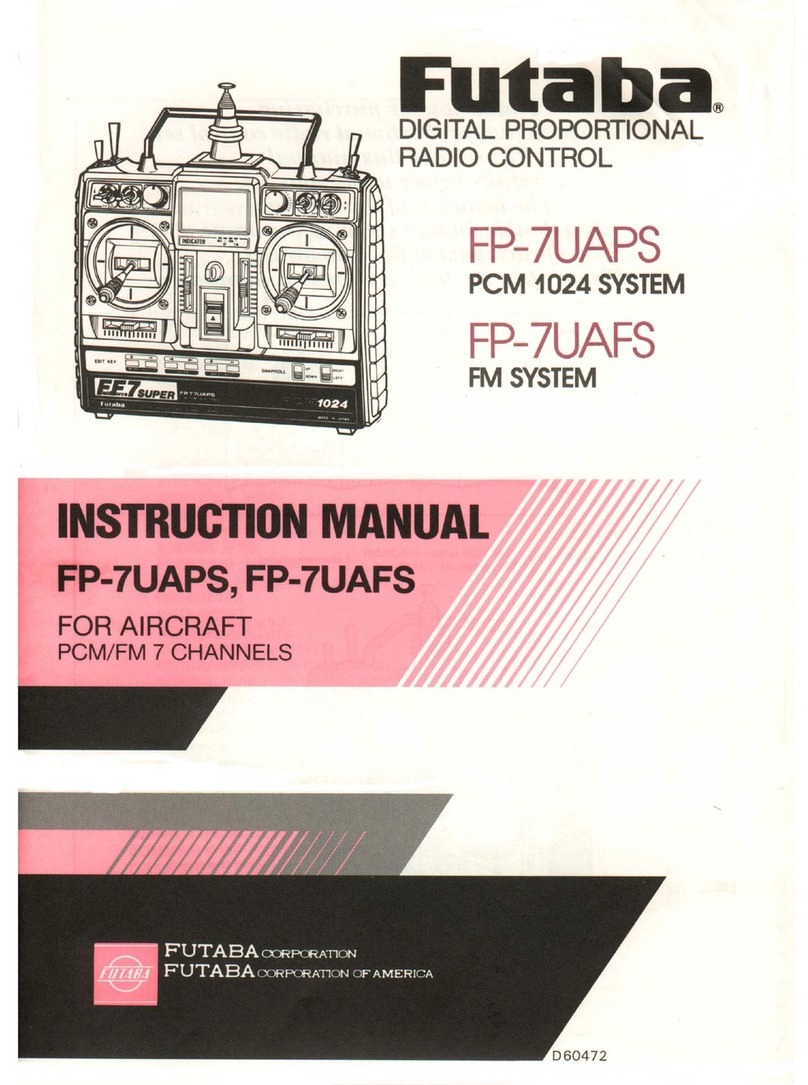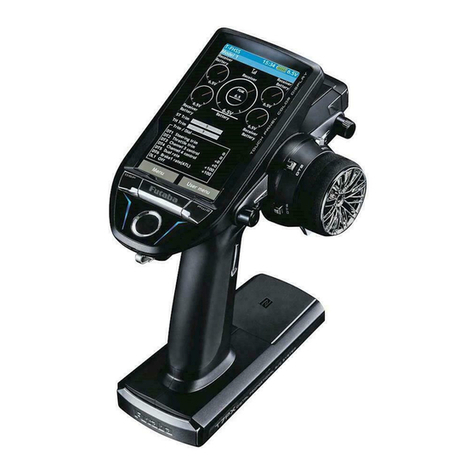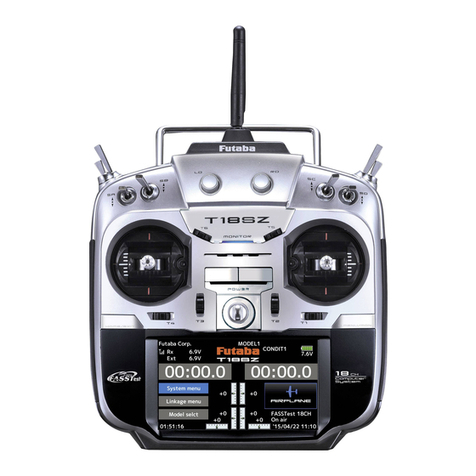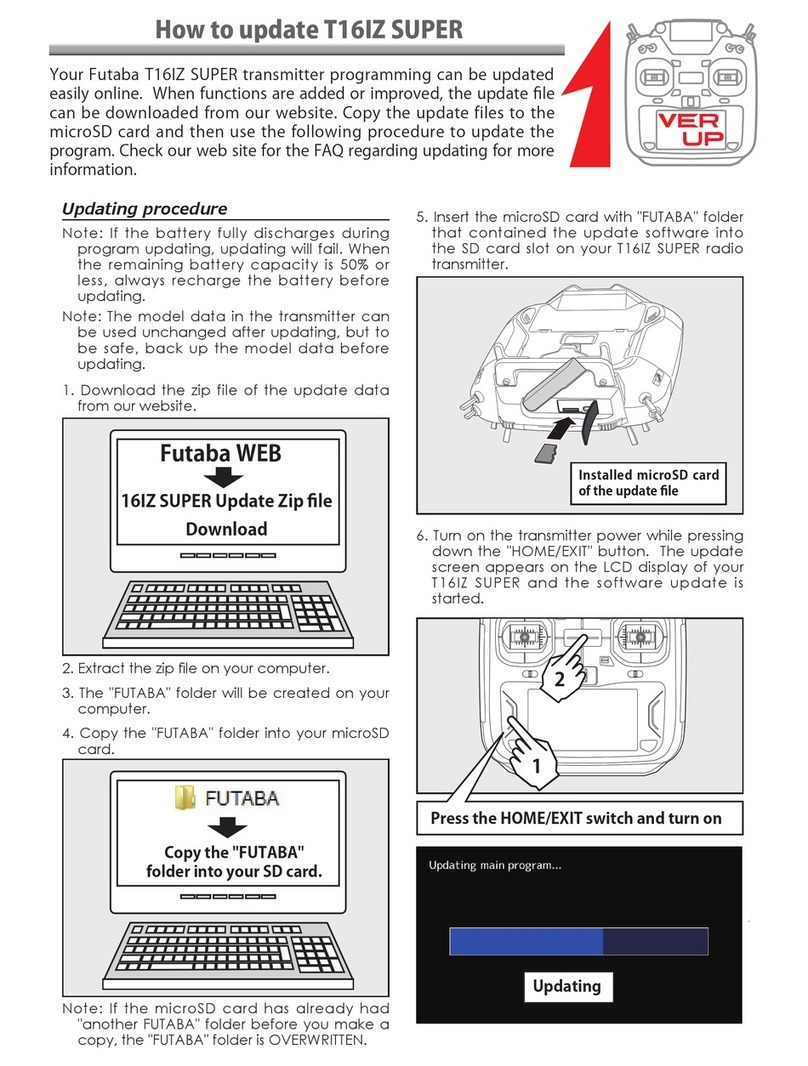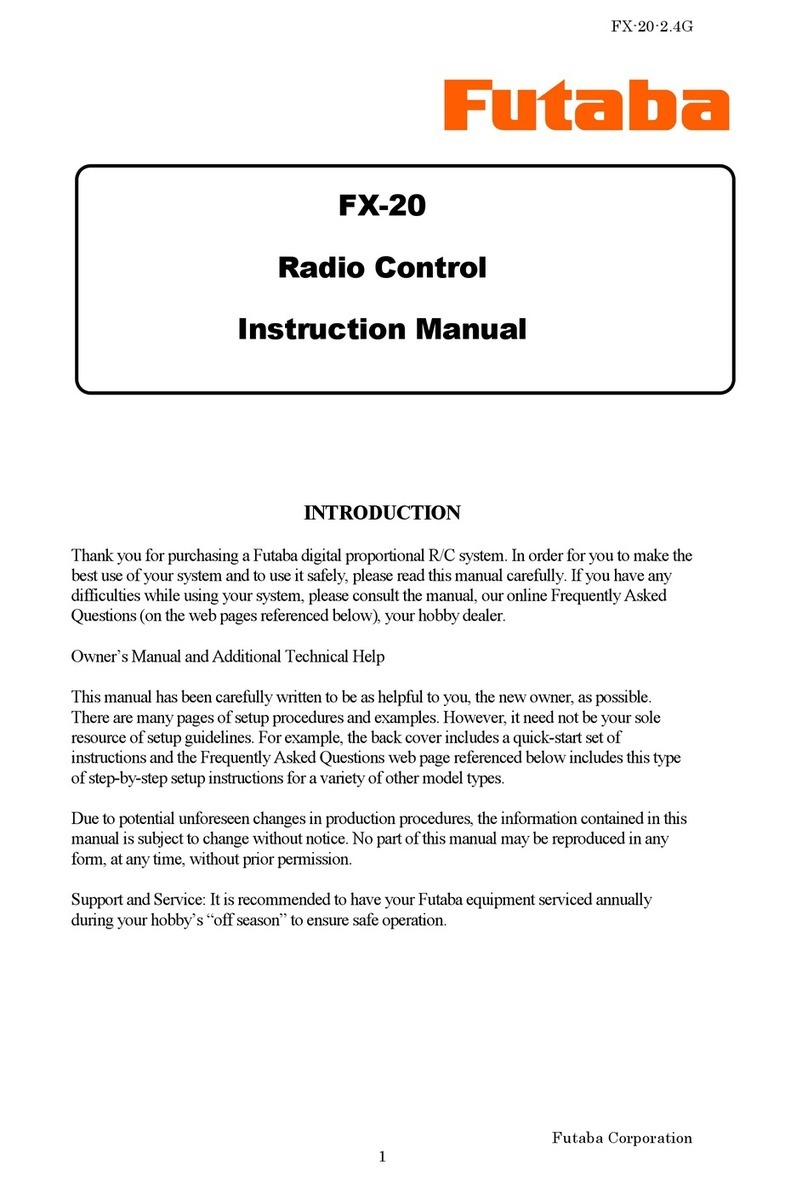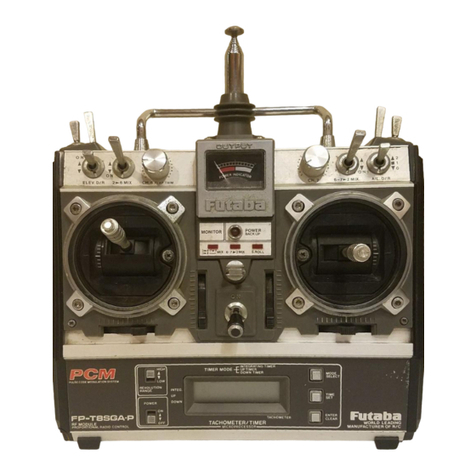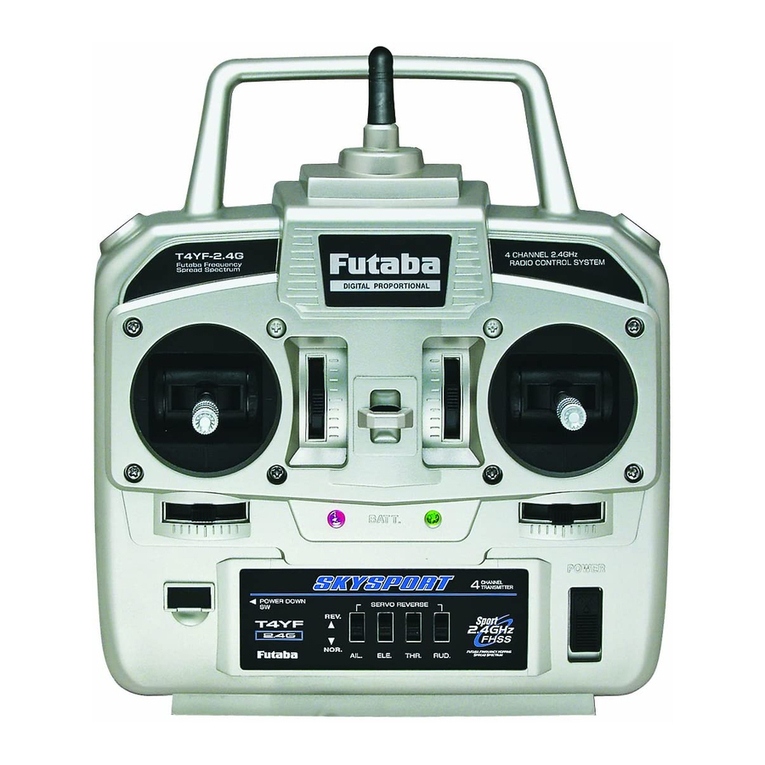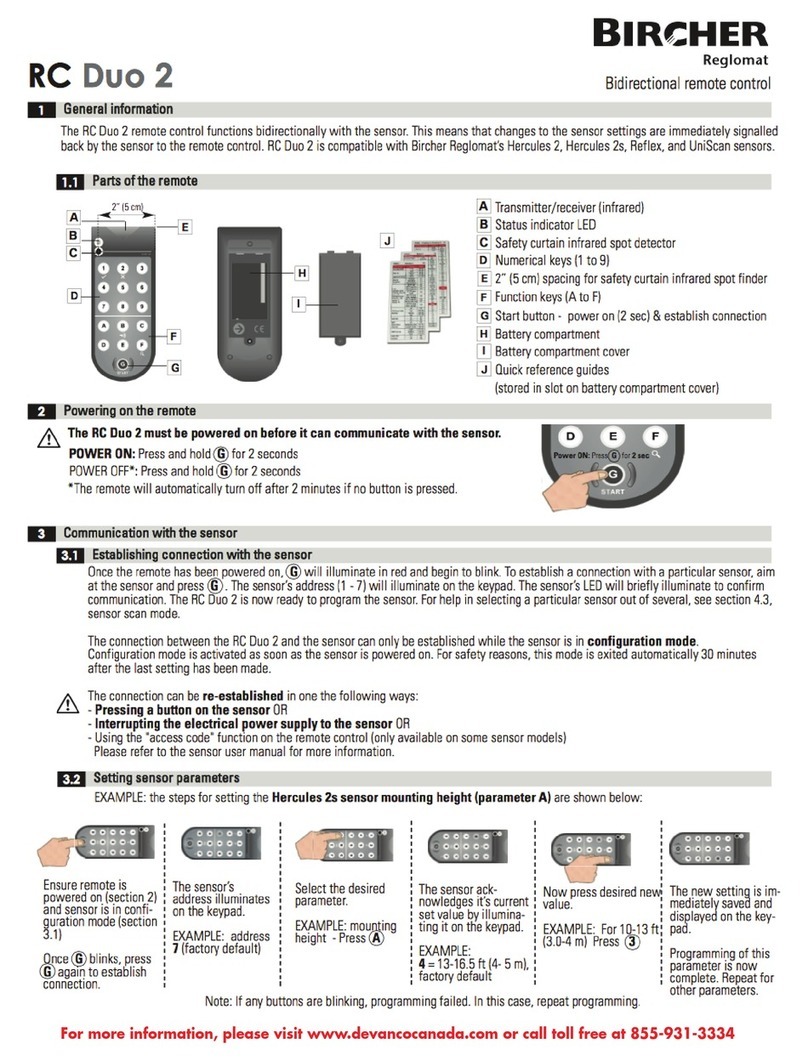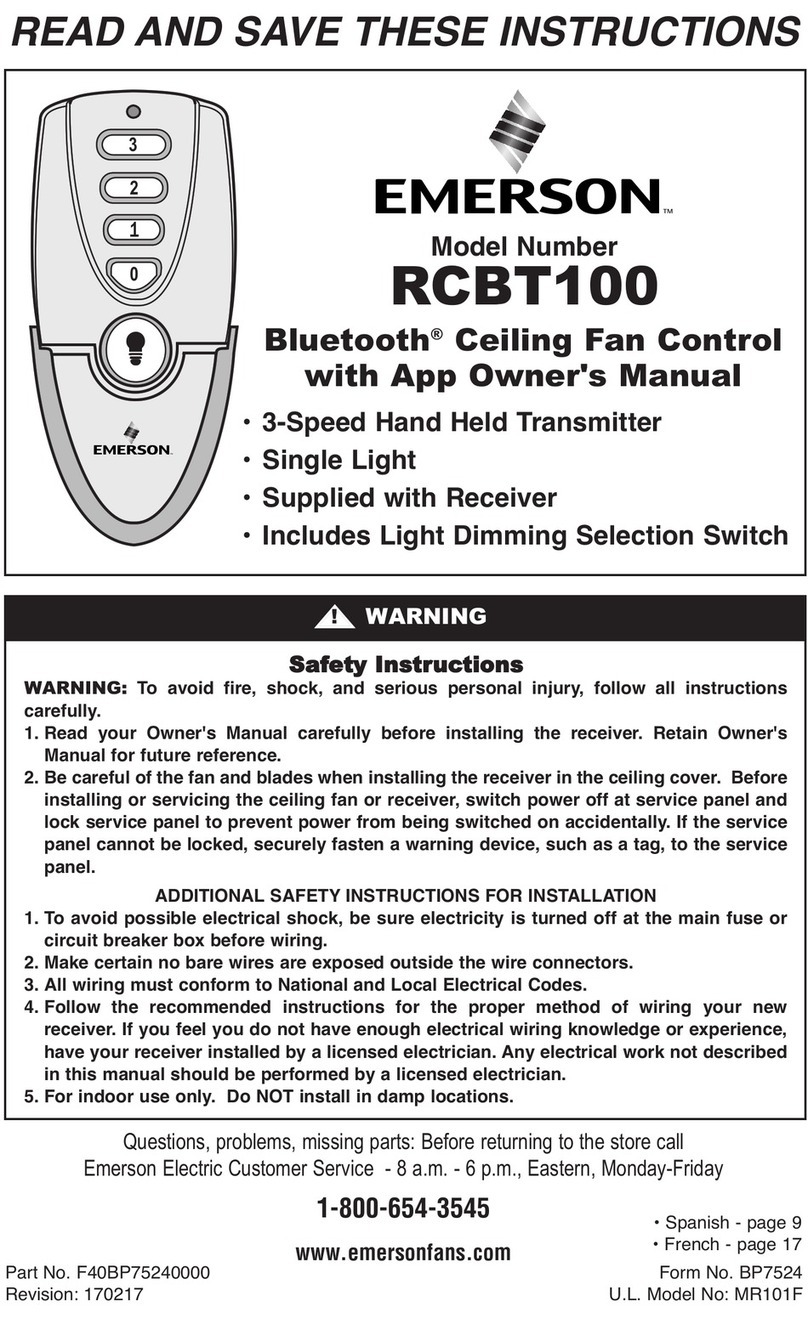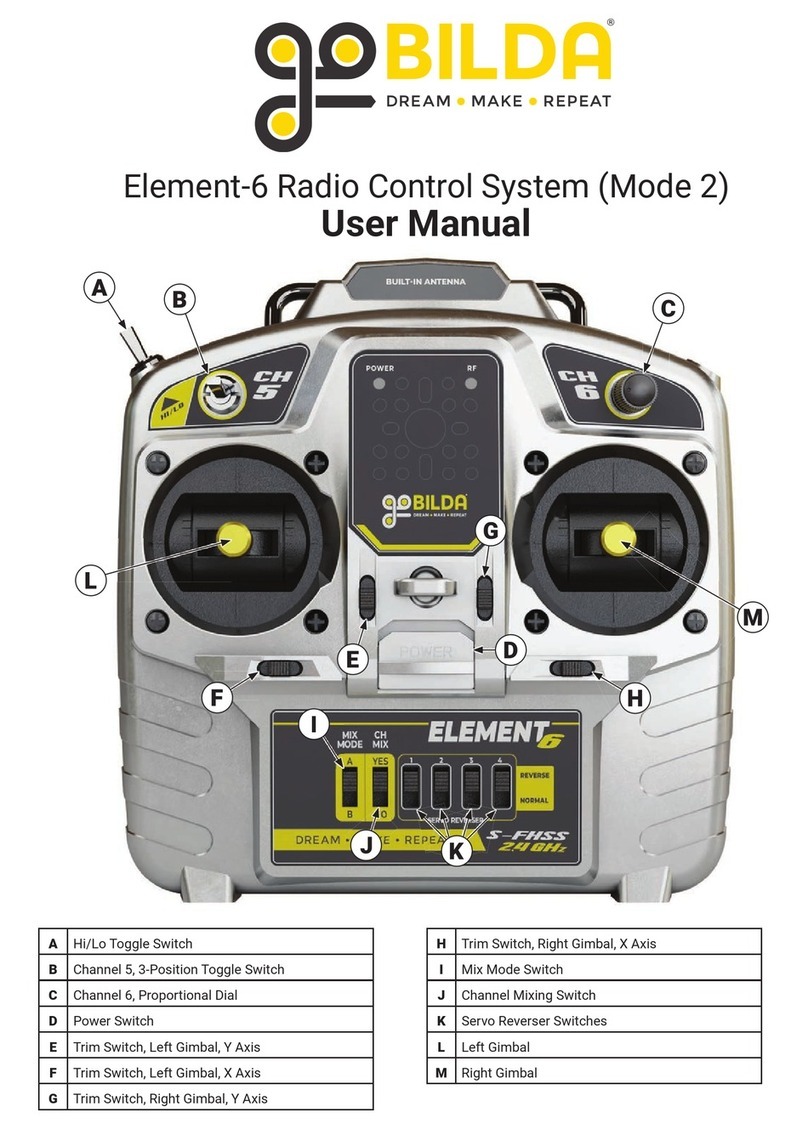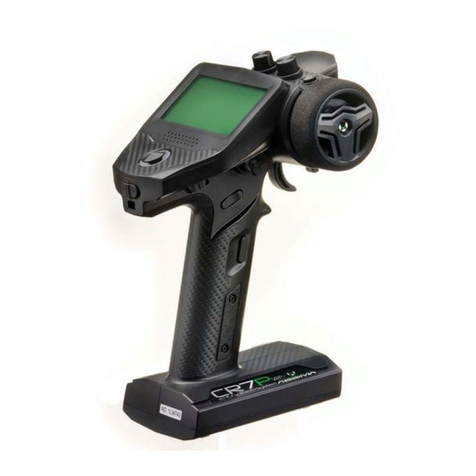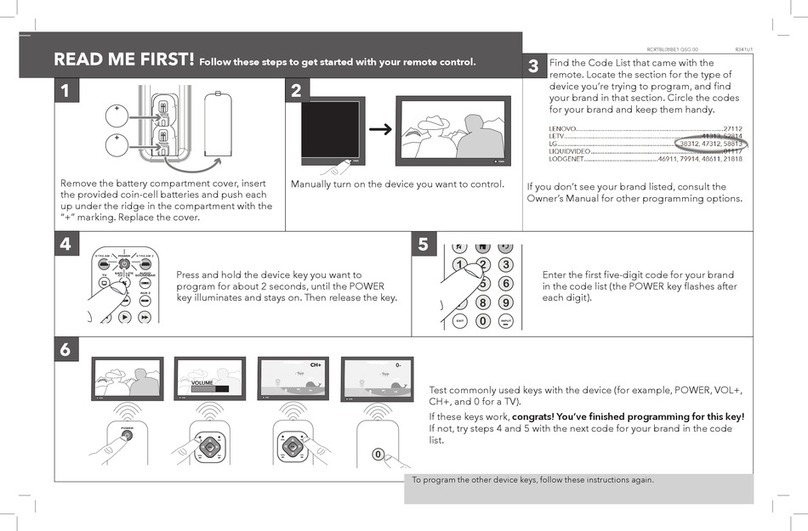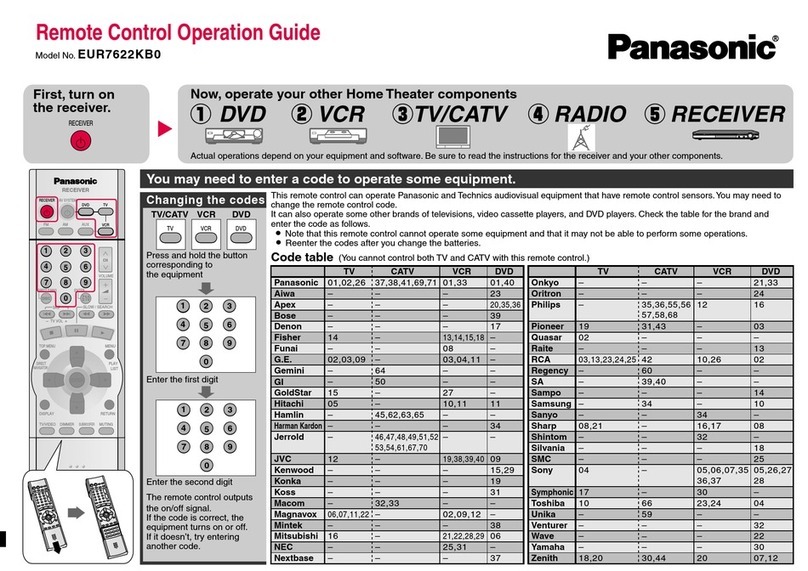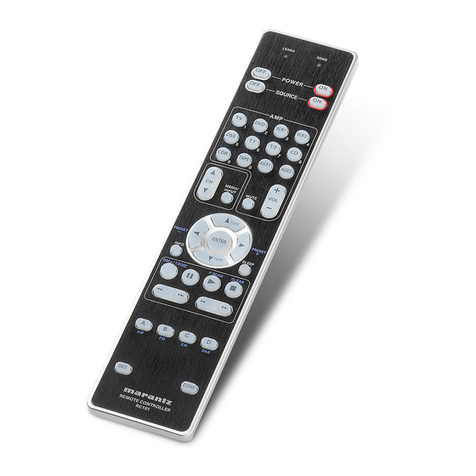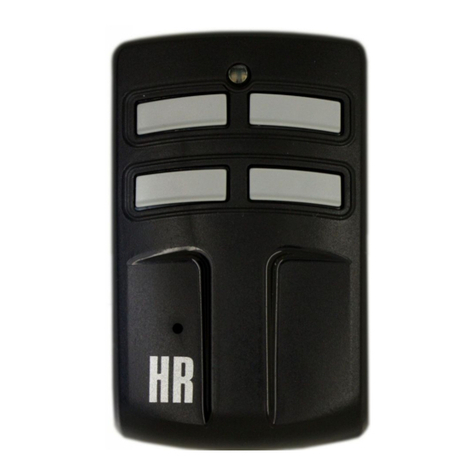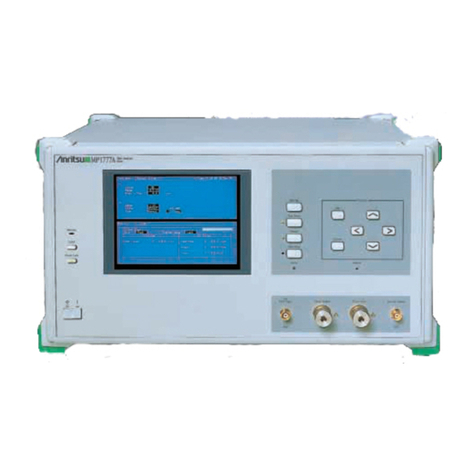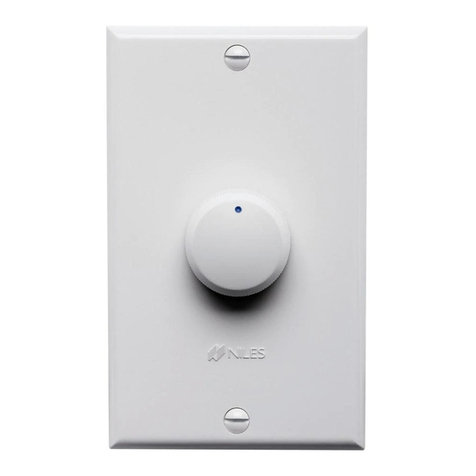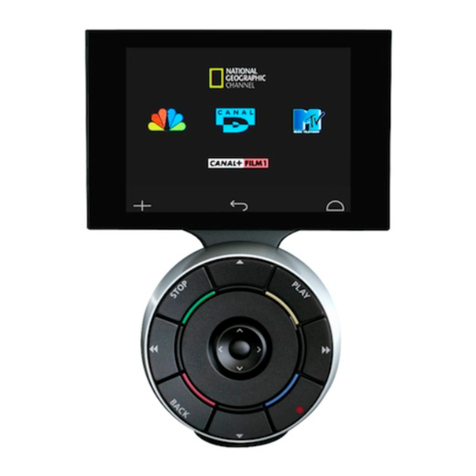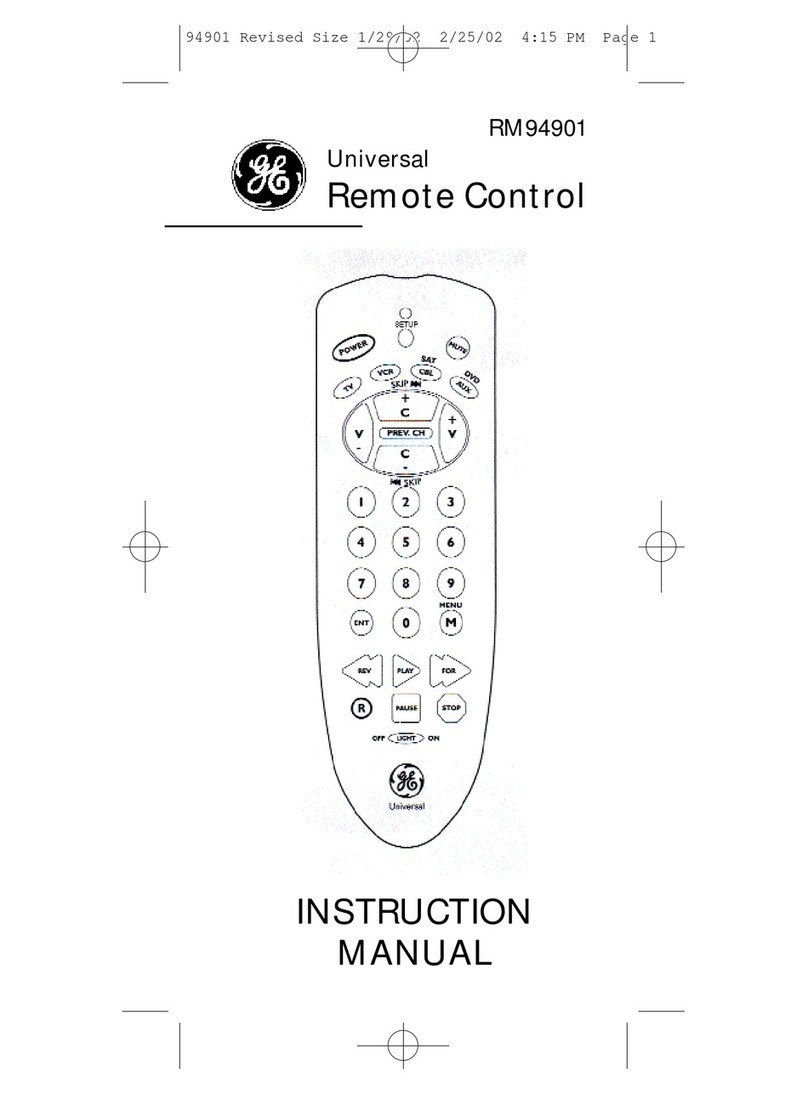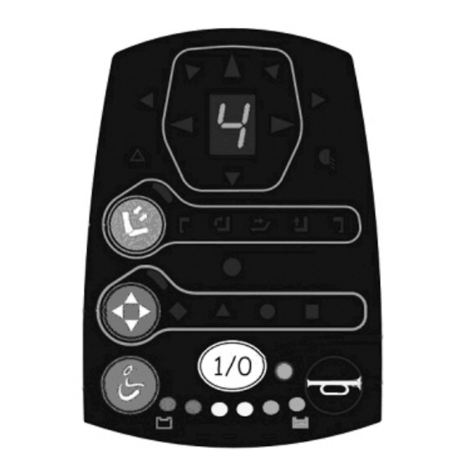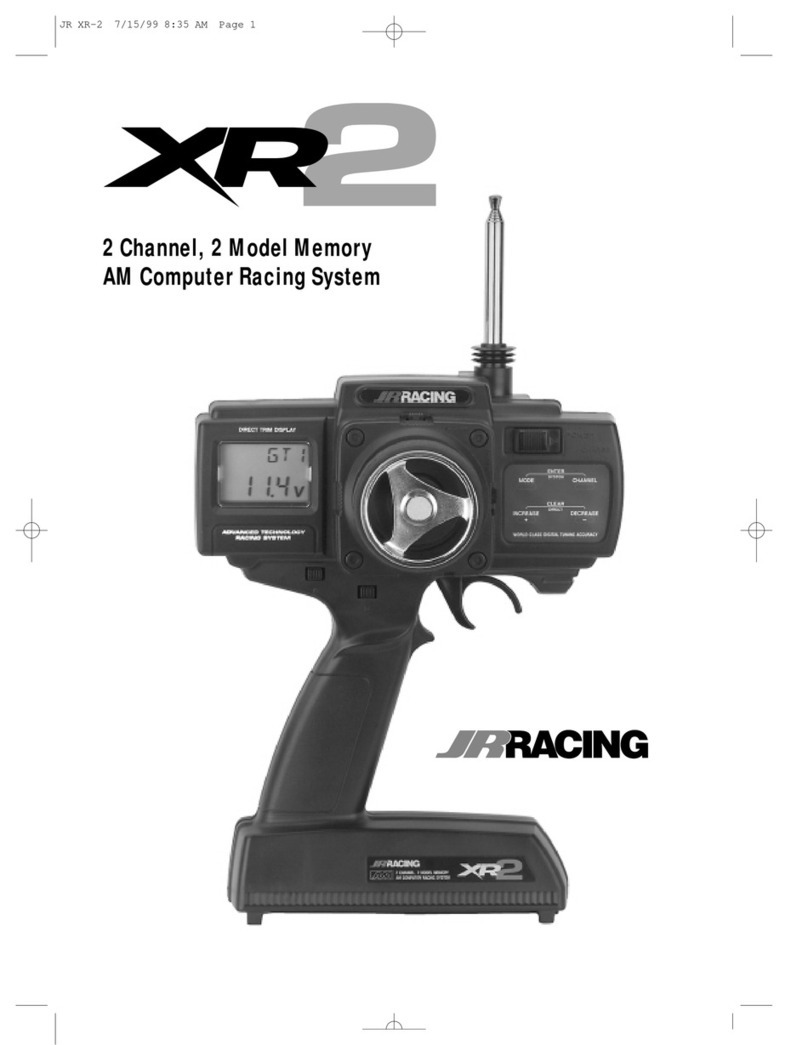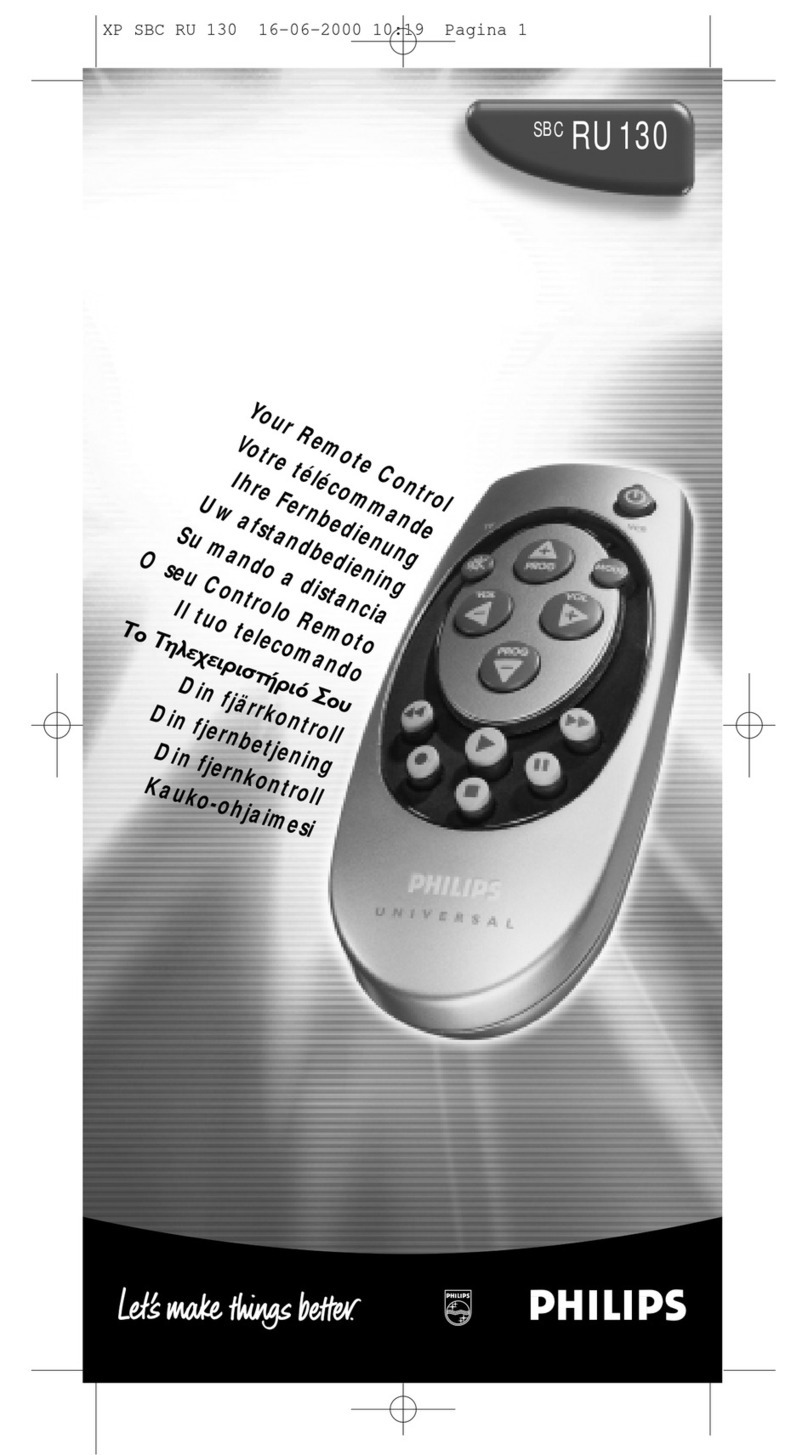
•FEATURES
The PCM1024H was specially-developed to meet the needs of the serious and demanding
R/C Helicopter hobbyist. Numerous features make this system adaptable to a wide variety
of complex radio control helicopters and stunt and scale aircraft. This is the most advanced
system available for FAI R/C Helicopter (F3C) competition. The built-in microprocessor
utilizing PCM (Pulse Code Modulation) makes this set very versatile and extremely noise and
deadpoint resistant.
Please read this manual carefully before using your set.
TRANSMITTER FP-T9VHP
• Programming data is displayed pictorially and
graphically on a large, easy-to-read
LCD
(Liquid Crystal Display) panel. Programming
and Cursor keys allow convenient adjustment
of aircraft functions.
•"1024"
Channel Resolution: New 1024 PCM
encoder format provides unexcelled servo reso-
lution and response time.
•RF
module uses a narrow
band modulation
circuit and PCM transmission.
• Precise control is made possible by three dif-
ferent endpoint adjustment functions: Adjust-
able Travel Volume (ATV), Adjustable Func-
tion Rate (AFR), and Adjustable Trim Rate.
• Dual Rates, Exponential, and Variable Trace
Rate (VTR) functions provide unlimited flexi-
bility
in
"fine
tuning"
aircraft
control
response.
• There are many functions for collective pitch,
throttle, and rudder, including four adjustable
pitch and throttle curves (plus inverted pro-
gram). Precise and convenient adjustments
enable optimum helicopter performance.
• Four programmable mixing circuits allow many
diverse applications for the control of complex
helicopters and fixed-wingaircraft.
• Four kinds of "swash plate mixing" are avail-
able for direct control and mixing of cyclic and
collective pitch functions (CCPM).
•Programming for up to 6 different models (in-
cluding model name) can be stored in the trans-
mitter memory. Memorized
data is protected
by a 5 year lithium battery.
• Accessory "Sub-Trimmers" are provided on the
transmitter front for convenient field adjust-
ment of frequently-used functions.
•Trim
positions
for
each
model
can be memo-
rized by the Trim Memory Function, allowing
the
trim
levers
and sub-trimmers
to
be returned
to neutral. Neutral positions can be reproduced
in the future, or copied onto another model
program
if desired.
• The Tachometer function measures engine rpm
by means of a built-in sensor.
• Speed (rpm)
can be measured for 1 to 5 bladed
propellers.
• Digital alarm/timer has
Up, Down,
and Rhyth-
mic timing modes.
• Integrating (Total
Timer) timer monitors total
transmitter
ON
time.
• Ball bearing open gimbal sticks, angled switches,
and "human-engineered" transmitter case en-
hance the feeling of comfort and precision in
transmitter operation.
• "Quick Change" Nicd battery pack is easily
accessable by means of a convenient panel
on
the transmitter back.
• Power Off function turns off the transmitter
power automatically if the controls are not
operated for 30 minutes.
• PCM or standard PPM operation can be se-
lected. (Allows operation of standard FM
receivers on the same frequency.)
• DSC (Direct Servo Control): The
DSC
cord
allows
operation
of
all
servos
without
turning
on the transmitter. The voltage of the trans-
mitter and receiver Nicd batteries can also be
read simultaneously using the cord.
• Servo reversing is available on all channels.
•Auto
Dual Rate:
If
desired, aileron, elevator,
and rudder dual rate can be turned ON and
OFF automatically, according to throttle stick
position.
• Stick length and angle is easily adjusted.
• Knobs and levers are conveniently located for
adjustments of Idle-Up functions. Revolution
Mixing, Hovering Throttle and Pitch, etc.
[1]
